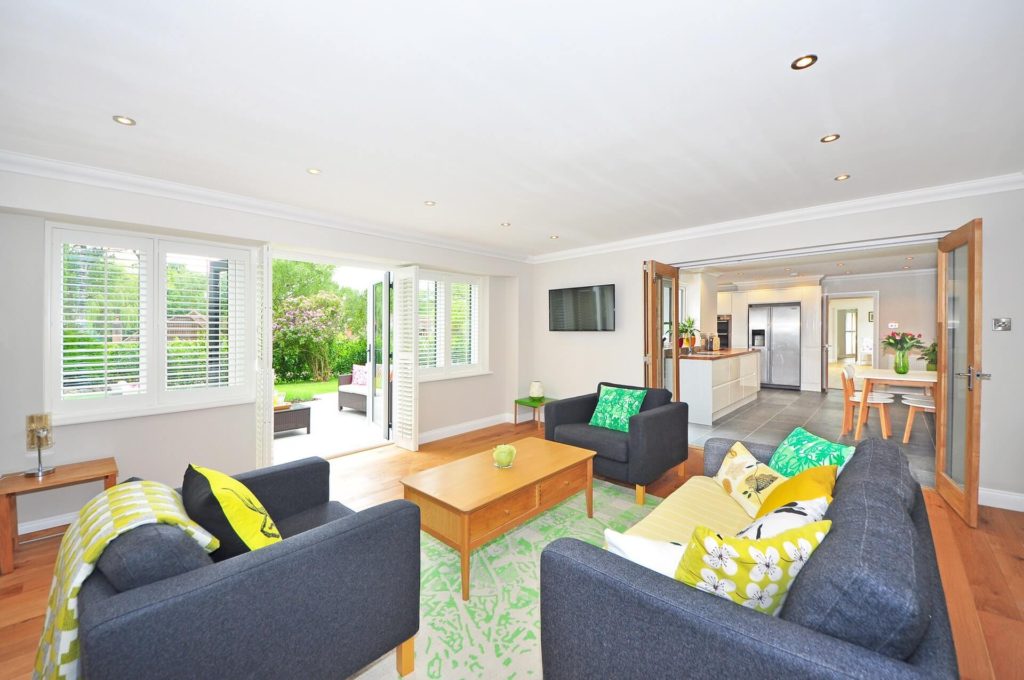When we think about future proofing our homes we tend to consider the flexibility of our interiors, ample storage and plenty of room to accommodate the family’s growth. However, with the rapid development of technology, building for the future is more about smart homes and going green.
From New York architects to Melbourne home builders, professionals in the industry are harnessing technology and focusing onsustainability. We’ve identified five construction trends we’re expecting to see more of in the future.
Smart homes
With the introduction of Google Home, it’s clear smart homes are becoming more mainstream and clearly, the way of the future. Intelligent innovations are becoming more affordable thanks to the rapid progression of technology.
Smart homes are designed to improve security, efficiency, sustainability and comfort. The technology allows us to interact with your home and personalise it to suit the way you live. Making sure your building is wired for the future will not only make your home sophisticated, it will also increase its value.
Pre-built homes
Pre-built homes have come a long way as more architects are challenging their form and aesthetics. Built off site, home owners can enjoy quick and cost-effective turn arounds without compromising on style. But single and two storey dwellings are not the only focus of the prefabricated industry. More multi-storey buildings will be produced in a factory setting in the years to come.
Although this trend won’t replace conventional building approaches, in 2018 we’ll see the industry take a larger share of the market place.
Multigenerational spaces
As the housing crisis continues in many major cities, architects and building designers are looking at better ways to accommodate multi-generational living. Building homes that suit the needs of several generation of occupants also reduces the costs of childcare and aged care.
Architects are anticipating the different demands for occupants from young children to elderly grandparents. In addition to cost savings, multigenerational design encourages family engagement and sustains the community long term.
Energy efficiency
Minimising energy consumption is at the forefront of home design and we will continue to see this trend in 2018.Previous efforts to make buildings more energy efficient relied on the homeowner buying appliances with the highest energy rating possible.
Today, on-site energy storage systems, photovoltaic systems, reflective installation, cross ventilation and high thermal mass will influence the design of homes. Green roofs will continue to play an important role in passive building design and temperature regulation.
Building green homes will ensure less energy is used, meaning they’ll be cheaper to run and have a reduced impact on the environment.
Eco-friendly concrete
Sustainable building materials will continue to be popular in 2018. This year we saw reclaimed wood and recycled materials such as tiles and stone, being used throughout residential home builds. However, in 2018 green concrete will be a main player.
As the world’s most sort after and used construction material, the introduction of green concrete solutions will help significantly reduce the high levels of CO2. A particular concrete alternative that we expect to see in more new builds is self-healing concrete. Self-healing concrete is supplemented with a strain of bacteria that grows limestone when the concrete is exposed to moisture. This will help fill in any cracks that form over time, reducing the need for additional concrete.
In 2018 there will be a major emphasis on green building thanks to the innovation of technology, materials and construction techniques. As the energy efficiency focus increases, more people are set to pursue an “off grid” lifestyle in 2018.

